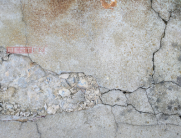Cracks in industrial floors
Linear separations in the floor surface are cracks. The cracks vary in size and depth. Cracks can be small hairlines or deep and large cracks indicating structural issues. Industrial structural design consultant must ensure that design of the floor is proper.
The cracks result due to multiple factors. Some of the factors are as follows:
Foundation Issues:
-
- Due to unequal settlement of the foundation and unstable soil conditions, there may be cracks.
- Lateral movements due to expansive soil may cause cracks
Concrete Issues:

- Uneven drying or rapid drying causes cracks
- Swings in temperature may cause the concrete to expand and concrete resulting in cracks.
- Improperly compacted subgrade induces stress and cracks
- Improper preparation and inadequate subfloor preparation can contribute to cracking.
- Impact by dropping of heavy objects may cause cracks
- Water leaks cause moisture accumulation, weaken the subgrade, and the floor cracks
Impact of cracks in an industry
Cracks result in many challenges in an industry. They could compromise structural integrity. Aesthetically, cracks are an eyesore. Cracks could impact the factory operations.
Steps to mitigate cracks
- Subgrade: Structural consultants must ensure the subgrade is designed according to the project requirements and geotechnical analysis of the soil. During construction, the PMC must ensure that contractors establish a proper subgrade.
- Concrete mix: A high-performance concrete mix with a low water-cement ratio reduces the potential for cracks. Structural consultants must specify a concrete mix appropriate for the industrial requirements. Admixtures also help improve workability and setting times. Certain admixtures also increase resistance to freeze-thaw cycles.
- Control Joints: These are strategic joints to prevent uncontrolled cracks. Spacing, depth and type of control joints are essential for effectiveness.
- Curing: Proper curing helps full hydration and uniform strength. Moist environment through ponding helps in proper curing.
- Reinforcement: Steel or fibre-reinforced concrete improves the tensile strength and reduces floor cracking.
- Proper planning of load distribution minimises the stress at one location.
- Maintaining a consistent temperature helps avoid cracks.
- Surface Sealant helps prevent moisture ingress to the floor. Occasionally, periodic resealing may be needed.
The industrial structural design consultant must ensure that cracks do not appear on the floor.












